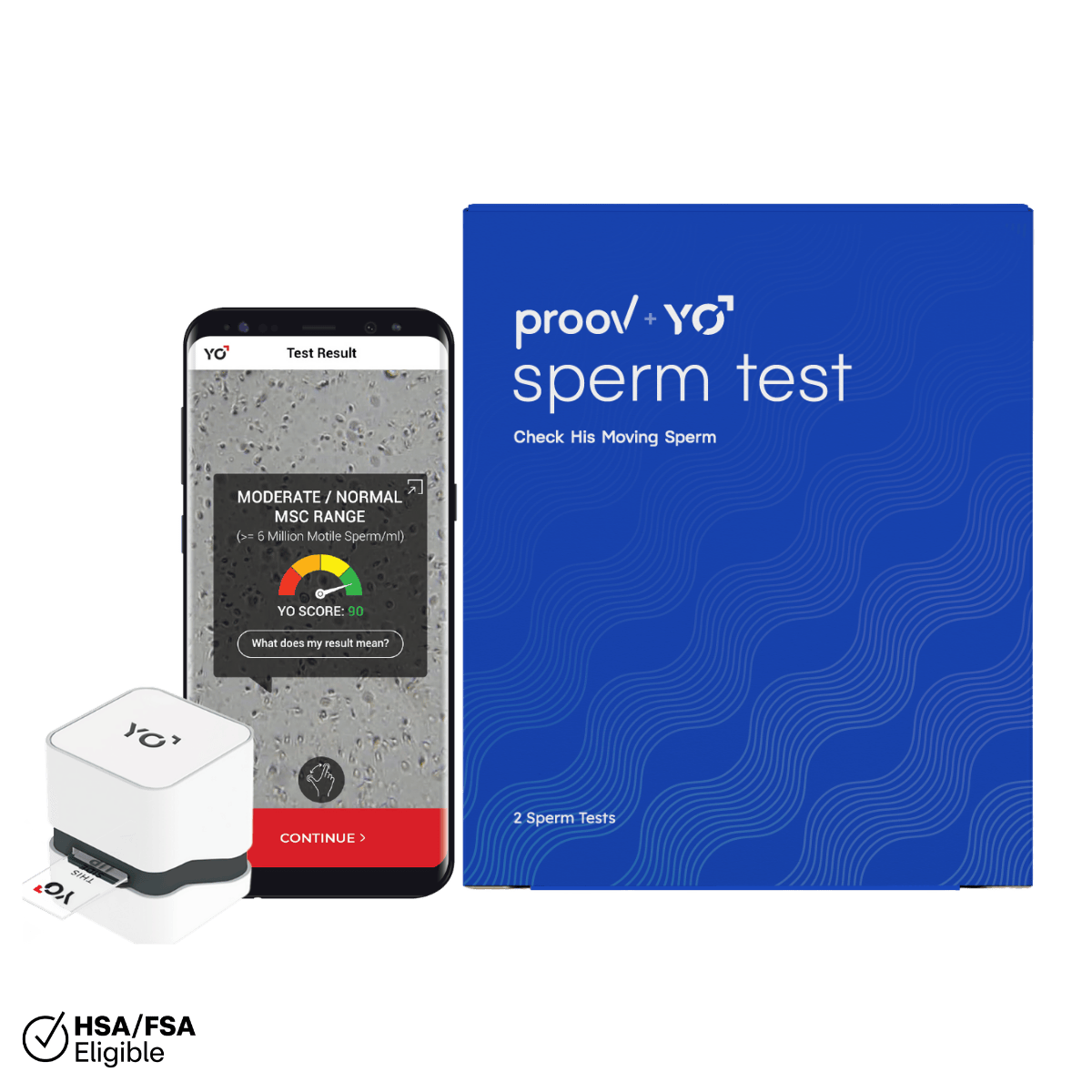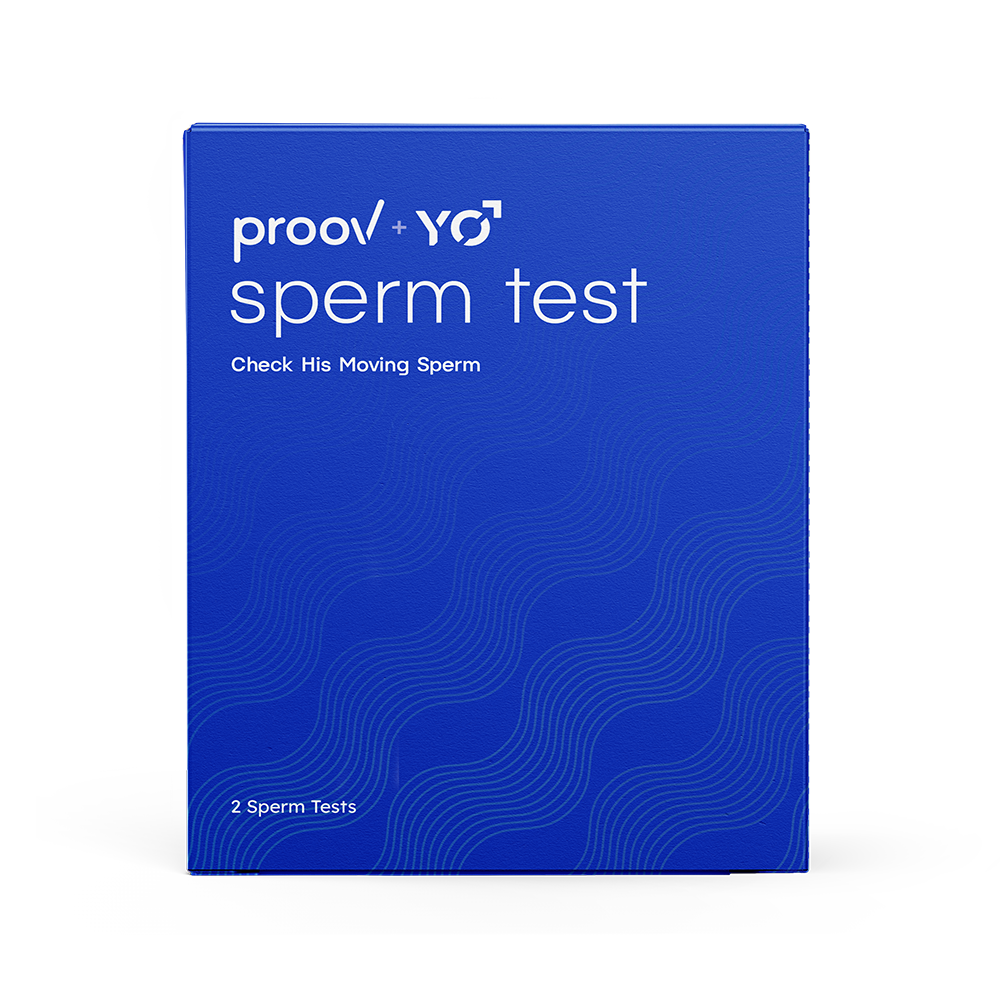Studies confirm that the fertile window is five days leading up to ovulation, but every fertile day isn’t created equal! Tests like Proov Complete are used to find these days, but what is the difference? Some days are labeled “high fertility,” but some days are labeled “peak.” If you’re wondering what the difference is, you’ve come to the right place.
Read on to find out the difference between “high” and “peak” fertility, what they actually mean, and how to identify them to increase your chances of conception.
High Fertility and Estrogen
Your fertile window opens when your ovaries begin producing enough estrogen. Estrogen keeps the dominant follicle growing and preparing for ovulation, and it also increases the uterine lining to prepare for a pregnancy.
Once estrogen levels have hit a certain point, you’re considered to be at “high fertility,” for a couple reasons. One is that this rise in estrogen means that ovulation is likely coming within a few days!
Another is that estrogen rising produces fertile cervical mucus, allowing sperm to survive up to 5 days. Even if you aren’t ovulating at the moment, if you ovulate within the next 5 days after intercourse, it’s possible that sperm is still available to fertilize that egg.

Peak Fertility and LH
After a few days of swiftly rising estrogen, luteinizing hormone is released, and this is what actually triggers ovulation. 24-36 hours later, you’ll likely ovulate, and during this time you are at your most fertile–that is, peak fertility!
How long does peak fertility last? Since eggs can survive 12-24 hours, some tests and cycle tracking methods/devices consider the day after the LH surge to be a second day of peak fertility. In general, peak fertility is really only these two days, while high fertility may include several days of estrogen rising leading up to ovulation.
Chances of Conception at High and Peak Fertility

Ultimately, if you’re TTC, it can be useful to time intercourse during times of both high and peak fertility, to increase your chances of an egg being fertilized shortly after ovulation. Especially for some people with short or difficult-to-detect LH surges, by the time you detect an LH surge it may be too late to time intercourse optimally. Detecting high fertility as well can be a useful and practical way to increase those odds.
What actually are your chances in high vs. peak times, though? What does peak fertility mean and how much of a difference does peak make? Ultimately, your chances of getting pregnant on each day leading up to and after ovulation are roughly:
- 27%: 3 days before (high fertility)
- 33%: 2 days before (high fertility)
- 41%: 1 day before (peak fertility)
- 20%: Ovulation day
As you can see, while chances of pregnancy for a given cycle are often lower than we want them to be when TTC, your best chance is the day before ovulation, which is why this is called peak fertility.
How to Identify When You’re Fertile

Now that you know the difference between high and peak fertility, and why it’s important to time intercourse during the entire fertile window and not just on peak day, you may be wondering how you actually figure out when these times are!
Cervical mucus monitoring: Since cervical mucus changes to become fluid and slippery when estrogen rises, tracking cervical mucus can be a good way to identify the beginning of your fertile window and your high fertility days. You can learn how to track your mucus here, or if you want a different approach, you can try kegg, a cervical mucus fertility tracker.
Estrogen testing: Estrogen rising contributes to high fertility, so tracking urinary metabolites of estrogen can help you determine when it’s becoming a good time to try! Proov Complete includes testing for E1G, a metabolite of estrogen that can help you find the full fertile window.
LH testing: Finally, detecting your LH surge is one of the best ways to determine your time of peak fertility. You can test for LH multiple times a day with Proov Predict, or all-in-one with E1G and PdG with Proov Complete.
So now you know – high and peak fertility may be slightly different, but they’re both important in understanding when to time intercourse, and you can easily identify your unique fertile times at home!













